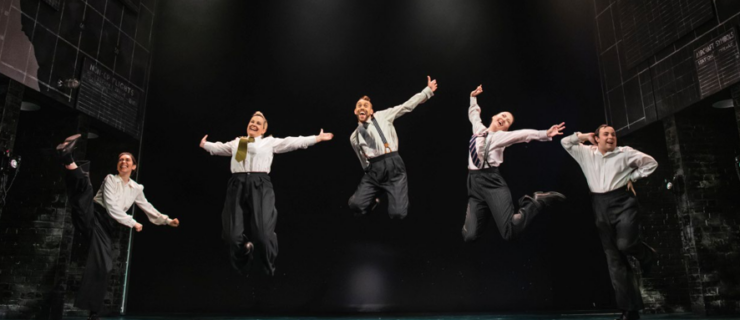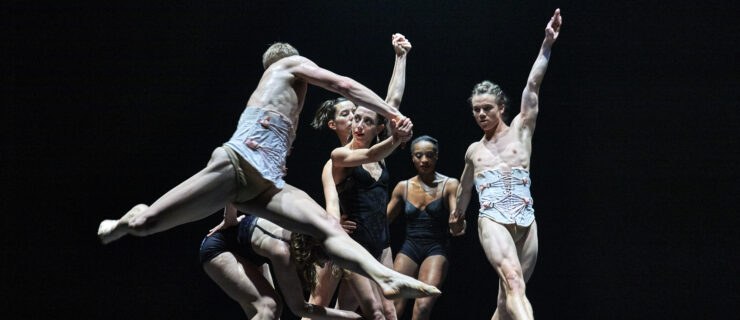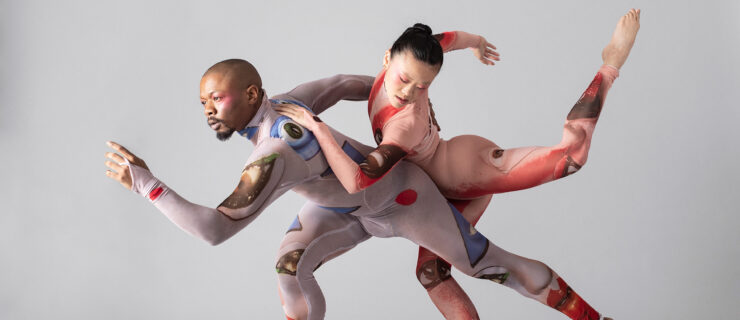These Colorado Dancers Transformed Loss Into Opportunity
For many dancers, the spring of 2021 brought the long-awaited return to the in-person performing they had been dreaming of since the coronavirus took hold of the world last year. For others, the pandemic’s impact proved too devastating for their companies to recover from.
This became the reality for the dancers of Aspen Santa Fe Ballet when the company announced in March that it was disbanding after 25 years.
“It was devastating, because it was our dream company, and we were living that dream,” says Laurel Jenny Winton, a former dancer with Aspen Santa Fe Ballet. Winton says the loss weighed heavily on the Aspen community, as well. “A lot of people were very upset,” she says. “I realized how important it really was to everyone, besides ourselves.”
Winton and the company’s other dancers were left to piece together their personal contingency plans and make some difficult decisions. “We all loved living in Aspen, and many of us had planted roots here,” Winton says. “We had two options: Either move away to continue dancing, or retire in order to stay here. I thought that those were not good options.”
Finding Their Footing
Although their ballet company had dissolved, Winton saw that the community’s hunger for professional dance had not dwindled. Winton and other former Aspen Santa Fe Ballet dancers started gathering in the studio in mid-June to workshop movement. They were eager to be back in the studio together, but their ultimate goal was to find their way back on stage.
Dividing the tasks of marketing, outreach development, donor engagement and rehearsal direction among themselves, the dancers pieced together their community’s new company, Dance Aspen, which became an official 501(c)(3) in early July.
Starting from scratch with no funding and with a global pandemic raging on, Winton says the group set a goal to raise $50,000 over the course of the summer. Instead, their first fundraiser exceeded this goal in one day. “We started appearing in local press articles and quickly became the talk of the town,” Winton says.
Company member Katherine Bolanos says the group, composed of six former Aspen Santa Fe Ballet artists and one dancer new to the Aspen area, would often meet at obscure hours to fit around the dancers’ competing survival-job schedules teaching dance and fitness classes, serving in restaurants and working in retail.
“There was a lot to put together, but we worked well together, because that’s what we were ingrained to do with our previous company,” Bolanos says. “We were all very close and like a family.”
At the front of the studio, Winton filled the position of executive director. She took well to a role filled with problem solving and learning new skills daily, but areas of law, finance and nonprofit development required outside support; fortunately, she received guidance from experts who had been drawn to the group’s persistence.
Meanwhile, ever-changing pandemic safety guidelines continued to present challenges. “We’ve all been flying by the seat of our pants,” Winton says. “Being very adaptable and able to pivot was extra-crazy, because we’re beginning a new company in the middle of restrictions that even established companies are struggling with.”
Taking the Stage
On September 17, Dance Aspen held a sold-out inaugural performance at the Wheeler Opera House. “It was so empowering to know that despite the circumstances that were out of our hands, we were able to make it happen for ourselves,” Winton says.
The mixed-repertoire concert included pieces donated by San Francisco choreographer Danielle Rowe and Grand Rapids Ballet’s resident choreographer Penny Saunders, as well as Ben Needham-Wood’s new piece Sow/Water/Grow, Mark Caserta’s On the Horizon and works choreographed by Dance Aspen company members.
For Bolanos, the performance brought an opportunity for healing after the heavy toll of the pandemic. “I could focus on something that I love,” Bolanos says. “It’s not just about dance, it’s about doing what you’re meant to be doing.”
As everything continues to come together for Dance Aspen, the company’s future will be largely influenced by collaborative decisions. “Everybody is very much invested in not just being an artist, but also debating how this company is going to grow,” Winton says. “I want to cultivate a way for all the artists to have equity in the company and be proud of what they’re doing.”
Winton says she plans to consult the dancers about the repertoire they want to perform as the company grows. Looking forward to their next performance, an all-female winter program with new pieces by Danielle Rowe and Ana Maria Lucaciu is in the works.
Winton also says Dance Aspen is on its way to becoming not only Aspen’s resident company, but also reaching the greater Roaring Fork Valley area in Colorado. “We want to perform in the schools and bring shows to every corner of the Valley, so that everybody gets to see what we can do and get inspired,” she says.
In just a few months, Dance Aspen has proved not only its potential but also its dancers’ resiliency. “I learned from the pandemic that change is inevitable, and sometimes it’s hard,” says Bolanos, “but I have to keep going.”




